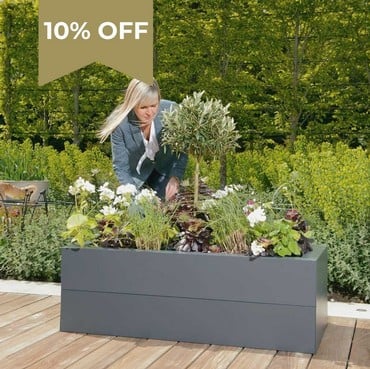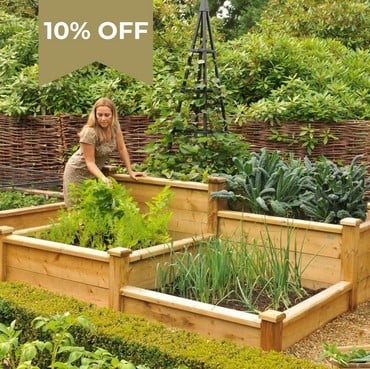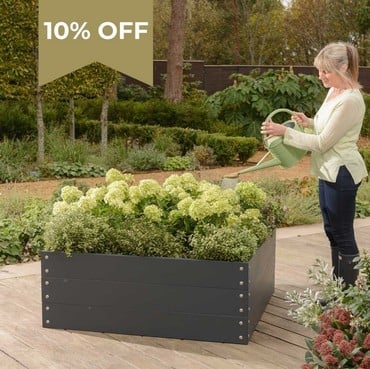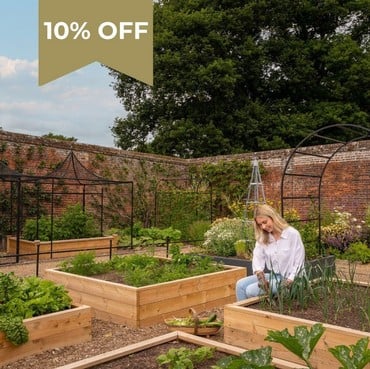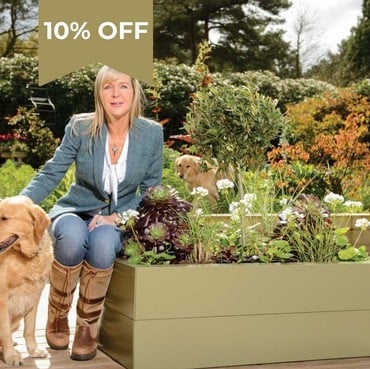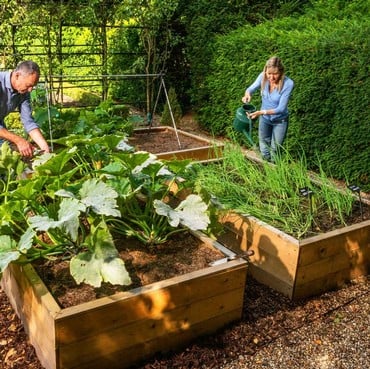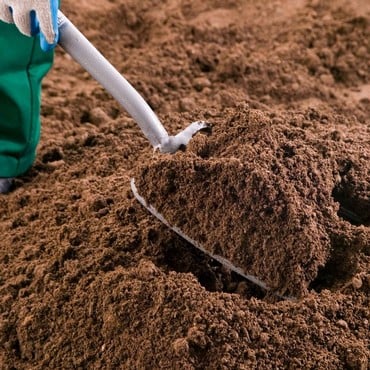Raised bed gardening is becoming more popular than ever before with increasing numbers of people opting to grow their own food and live a more sustainable lifestyle. With the variations in height, size, potential higher yield and aesthetic value, raised bed gardening should be on your mind for gardening success...

A is for Accessibility
Many individuals suffer from back issues or other physical ailments - raised beds bring the growing surface closer and save your back from leaning, hunching and kneeling. Build your beds with wide borders and you might even be able to sit while you work.
B is for Beginner
If you’re new to gardening, starting a veggie plot can feel like a very daunting process. With an array of plants, vegetables and products, it’s hard to know where to start. Working with raised beds allows you to break down your garden into manageable areas. They are great place to start for any new grow your own gardener.
C is for Creativity
Raised beds, particularly wooden ones, offer a perfect foundation for creative gardening. You can attach sturdy trellis directly to the frame, or opt to add a wire obelisk to the centre of the bed: a great option for vines and vertical gardening. With added hoops, you can easily drape mesh and fleece to convert your beds into cloches during cool seasons.
D is for Drainage
Areas that tend to flood can become gardenable with the addition of raised beds. Overwatering is less of an issue and you’ll get more moisture throughout the bed to encourage perfect growth.
E is for Erosion
Raised garden beds have a stronger base and with wooden walls that serve as support to the soil, this can help to prevent soil erosion.
F is for Fruit
You can grow almost any plants in raised beds. Soft fruits such as strawberries, currants, raspberries and blackberries will do particularly well.
G is for Growing Season
Raised beds extend your growing season because they dry out more quickly and warm up faster in spring than flat beds do, allowing you to plant sooner.
H is for Higher Yields
Raised beds can produce twice the amount of vegetables per square foot than traditional bed gardening, since veggies can be planted at higher densities. There is no need for wide spacing since walking or tilling between rows is not necessary.
I is for Irrigation
If you plan and install your irrigation system before planting, you can save yourself a lot of work and time spent standing around with a hose later on. Soaker hose and drip irrigation are the two best ways to irrigate a raised bed.
J is for Joy
Aside from the immense joy that comes from growing your own, homegrown crops can bring diversity, improved nutrition and outstanding flavour to the table.

K is for Kits
Save yourself some time and opt to purchase an easy-to-assemble raised bed kit. Wood planks arrive pre-cut with no drilling or extra cutting required. They kits come in a variety of designs and sizes, so you can select a style that will work for your specific needs/outdoor space.
L is for Location
One of the best things about raised beds is that they can be set up in places you couldn’t normally garden. You can grow on balconies, courtyards, and even slopes.
M is for Mulch
Mulch with straw, grass clippings, leaves or woodchips after planting in your beds. This will reduce the amount of weeding (if any) you’ll have to do and keep the soil moist. Mulching your beds will also help regulate the soil temperature.
N is for No Tilling
In general, raised bed gardening requires less time. If properly maintained, raised beds seldom need to be weeded, nor do they need to be tilled every spring.
O is for Outsmart Pests
Most gardeners have had to battle some sort of garden nemesis, whether it was a vole, mole, or a rabbit. Having a raised bed goes some way in preventing common small rodents and mammals from devouring your crops. If nematodes and soil parasites are a problem, you may have better protection against them by using a plastic liner at the bottom and sides of the bed.
P is for Preparation
Initially, raised beds require a fair amount of prep work. You’ll need to decide the type of raised bed, the material, size and most importantly its location. While beds can be situated just about anywhere, it’s wise to position them somewhere that receives at least eight hours of sun a day. It’d be beneficial to decide exactly what you’re planting in each bed beforehand too.
Q is for Quality materials
There are many different types of materials that can be used to build raised garden beds. It used to be that raised beds were constructed primarily from wood, but today there are many stylish and practical materials to use in addition to wood, like concrete, stone and even metal.
R is for Rotate Crops
Crop rotation is an essential aspect of vegetable gardening. This helps to reduce a build-up of crop-specific pest and disease problems. Rotations are far simpler to practice with several smaller beds rather than one large plot.
S is for Soil
Raised beds allow greater control over the quality of the soil. You can even bring in new soil or incorporate more nutritious organic matter to improve the growing conditions. Soil pH, texture, depth and richness are all right at your fingertips.
T is for The Look
This could well be one of the top reasons some gardeners opt for raised garden beds. You can use your creativity and imagination to design a garden bed in any shape.

U is for Upkeep
Raised garden beds offer a distinct advantage over planting in the ground when you take into consideration how easy they are to manage and maintain in comparison.
V is for Veggies
All vegetables can be grown in raised beds but some are far more suitable compared to others. Root vegetables such as carrots, parsnips and turnips are ideal for raised beds, just make sure the bed is deep enough for the root. Beetroot, onions, radish, potatoes, French beans, lettuce and garlic will also flourish in a raised bed.
W is for Which? Best Garden Buy - January 2022!
For the 11th year running, our BEST SELLING Standard Raised Beds have again been named as a Which? Gardening Best Buy! This fantastic accolade is testament to the fact that their quality and functionality cannot be beaten. And with prices from £47, why not buy now and get ready for the season ahead... Get yours here
X is for Xeriscaping
Simply, xeriscaping is the art of taking plants that require little water and using them within your beds/landscape. Many herbs, such as marjoram, oregano and rosemary, thrive in hot, arid conditions are a great for xeriscaping. (big thanks to one of our customers for coming up with this one for us - we were stumped!!)
Y is for Yummy
Raised bed gardening will aid in producing excellent produce that will taste far superior than any supermarket alternative.
Z - is for Zucchini (Courgettes)
One of the most popular vegetables in the squash family, courgettes are etremely versatile and easy to cook and will flourish planted in raised beds.


















